The project descriptions that follow are illustrative initiatives in five different theme areas of innovation-driven economic strategy directed by James Gollub since 2005.
Theme 1. Innovation-Driven Regional Economic Development
Theme 2. Sustainability & Ocean Science & Technology-Driven Economic Strategy
Theme 3. Clean Tech & Energy Innovation-Driven Economic Strategy
Theme 4. Bioscience/Biomedicine-Driven Economic Strategy
Theme 5. Institutional Innovation Strategy & Impact Investment
Theme 6. Creative Industries & New Media Economic Strategy
|
Further information and non-proprietary presentations concerning these or earlier initiatives for region’s around the globe at the economic ‘inflection point’ can be made available on request. Please contact: Jim@jamesgollub.com. |
| |
|
|
| |
California Economic Summit: Accelerating Growth of Middle Income Jobs |
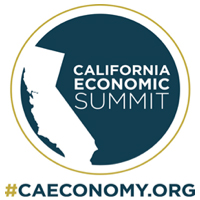 |
Since 2014 and continuing today James Gollub has served as advisor to the California Economic Summit (managed by California Forward). In that role he served as co-chair of the Capital Action Team of the Summit. In 2016 he facilitated a statewide collaborative work session at the Annual Summit and also authored a white paper and blog on the outcomes. His white paper presented a framework and approach to accelerating the growth of middle-income jobs in California. The framework emphasized regional practices to respond to globalization, decentralization of industry and the impact of automation. He outlined methods for achieving three goals in any evolving industry. This include: innovation through solving distinct market problems via aggregating demand or delivering results in new ways, competition through enhanced productivity and workforce engagement, and adding local value-added through strategic import substitution and enhanced local sourcing. Gollub’s paper also outlined how collaborative strategy he and other advisors have applied around the globe have helped regions build portfolios of industry clusters that are more agile and adaptive than competitors. |
| |
Inland Empire Diagnostic Analysis & Strategic Recommendations |
 |
In early 2017 James Gollub Associates, in collaboration with California Forward (CA Fwd), under the auspices of the California Economic Summit with USDA funding completed a next generation economic diagnosis and recommended strategy directions for the Inland Empire region. This initiative introduced a new framework for regional economic growth, identified and analyzed the structure and competitiveness position of all regional clusters, assessed the competencies and responsiveness of major categories of economic inputs (workforce, innovation, financing, logistics, resources, governance and quality of life), and defined the structure for an enhanced regional partnership that could implement strategic directions defined in this effort. |
| |
Blueprint for Regional Economic Growth (BREG) for South Central Kansas (Greater Wichita) |
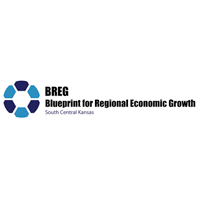 |
In 2015 James Gollub Associates, in collaboration with STARNET LLC, developed and directed a regional economic strategy for the 10 county greater Wichita region. This strategy is the Blueprint for Regional Economic Development (BREG) and completed a four phase collaborative strategy that (1) mobilized key stakeholders, (2) analyzed overall regional economic performance, the competitive position and dynamics of eight clusters, and the comparative strengths of key economic inputs, (3) catalyzed bottom-up, market-driven, impact-focused cluster strategies and cross-cutting regional initiatives, and (4) realize a new implementation partnership.
|
| |
Pacific Asian Consortium for International Business Education and Research (PACIBER) Keynote |
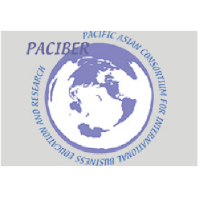 |
In 2014 Gollub was invited to prepare and deliver a keynote address at the annual meeting of PACIBER and its 27 business school members committed to business education, research and exchange across faculty, students and business across the Pacific Rim. Gollub spoke on “Sustainable Prosperity and the Triple Bottom-Line—Challenges and new approaches for universities and their business schools”. Gollub explored the evolution of the triple bottom-line framework with early examples his team had developed for corporations and the Council on Private Sector Initiatives, his work applying improved understanding of public and private sector governance to shape markets and collaborative strategy initiatives to rapidly implement change. He then showed how aligning specific categories of economic inputs with the functional requirements of the output ‘engines’ of the economy leads to measurable improvements in regional performance in prosperity, equity and sustainability. The key to accomplishing these positive outcomes is to recognize and collaboratively apply governance tools in new ways. Gollub closed with examples from regions around the globe at the ‘inflection point’ with whom he and his team have worked over the past decades. |
|
| |
Buckminster Fuller Institute – Regenerative Solutions Strategic Options |
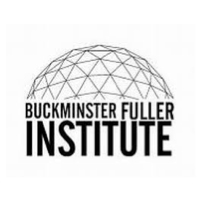 |
In 2018 James Gollub Associates was asked by a board member of the Buckminster Fuller Institute (BFI) to analyze their current structure and propose new structural options to enable sustainable fulfillment of the Buckminster Fuller mission of advancing ‘regenerative solutions’. To that end our team applied our innovation pipeline framework and built on our experienced designing institutions that successfully build bridges along the innovation pipeline from science to technology, technology to solution and solution to marketplace. Our team designed a distinctive organizational structure anchored by a novel operating foundation that oversaw four discrete but affiliated components that include a regenerative innovation corporation (proactive technology commercialization), regenerative enterprise acceleration (startup finance and management), regenerative community partnerships (catalyzing and bringing technical support to selected communities), and regenerative micro-cluster development (applying cluster logic to reuse and redevelopment). Our team then offered an action-focused commitment to implement selected components. The board of the Buckminster Fuller Institute prioritized recommended components they believed were most feasible. |
| |
University of the Virgin Islands – Research & Technology Park Diagnosis |
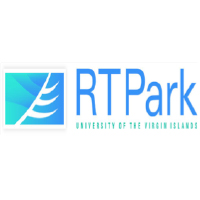 |
In 2015 James Gollub Associates provided initial advisory services to the University of the Virgin Islands Research & Technology Park on the framework for growing a next generation marine science and technology park. This project introduced the JGA innovation pipeline framework for optimizing the distinctive Caribbean location, key ecological, high bandwidth communications, and financial assets of the region, and how to leverage these to meet the changing economic needs of the United States Virgin Islands (USVI).
|
| |
AltaSea Marin S&T Cluster Business Framework |
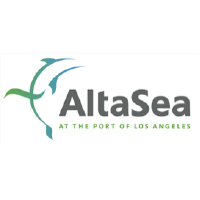 |
In 2015 James Gollub Associates, through LAEDC, provided initial advisory services to AltaSea, a new initiative to establish a marine science and technology park at the Port of Los Angeles’ first pier, now a historic district. The services provided outlined the innovation pipeline and how it could be applied by AltaSea to optimize economic development in San Pedro and Southeast Los Angeles. The framework showed how AltaSea could serve as the anchor for dramatically expanding translational research focused on marine science and technology through leveraging the existing SCMI and large coordinative consortia of Southern California Universities, build a novel mode of technology development and commercialization (beyond incubation), and use organization and management of a marine science and technology cluster network to attract and consolidate prospective tenants for co-location at the site’s business hub. AltaSea received US EDA funds and is building the new marine science and technology complex. |
| |
Project Kaisei: Reducing Marine Debris Waste in the Ocean |
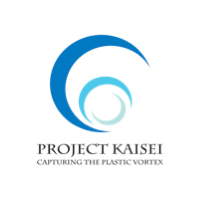 |
In 2009 Gollub was retained by the founders of a new initiative to study and devise new means of preventing and cleaning up pollution in the ocean, called Project Kaisei (Japanese for ‘Ocean Planet’), to guide the preparation of their strategic plan. Through his work with founders, board and global experts a mission was confirmed to accelerate the restoration of the health of the world’s oceans through collecting and reprocessing marine debris concentrated in specific zones, and by actions to reduce and prevent future discharge of waste into the oceans. The initial focus defined in the strategy was to study and document the types and amounts of debris that are collected in the convergence zone of the North Pacific Ocean. Plastic, in particular, presents a formidable hazard to marine life due to its abundance and, in many cases, its inability to fully degrade. 60-90% of marine litter is now believed to consist of plastic polymers, a class of pollution that appears to be growing at a rapid rate as societies around the world consume more disposable items. Project Kaisei strategy was not only concerned about the quantity of this prevalent pollutant, but the biological impacts that these synthetic organic polymers have on aquatic species as well as ourselves and the options to economically collect and clean up marine debris, to convert marine debris into fuel or materials, and prevent its initial discharge. The strategy was used to secure initial funding for a first phase of action in which a research vessel from the Scripts Institute Seaplex tem and the eponymous tall ship, the Kaisei, to independently navigate and meet to the center of the North Pacific Gyre, documenting surface and subsurface marine debris patterns, preparing and disseminating these findings. The voyages of the two vessels was featured prominently on Google Earth, with live transmissions from researchers as they made their ways to and from this severely impacted region of the ocean. Major press events were held following the teams return with speeches by team members and prestigious advisers and board members, including Silvia Earle (National Geographic), and Jean Michel Cousteau (Ocean Future Society). Educational forums, continued research and a documentary film on the Project Kaisei have been produced. Three major voyages have been completed as work on this challenge continues. |
| |
State of Hawaii: Economic & Environmental Impact & Options of Cruise Vessel Industry |
 |
In 2007 and 2008 Gollub and his team (with ICF) and consultants completed an assessment of the Hawai’i cruise industry to ascertain cumulative impacts and benefits to the economy, environment and communities of each island to guide state policy. This study was carried out for four agencies, led by the Hawai’i Tourism Authority and the Department of Business and Economic Development and Tourism. To oversee this important study a 30-person panel of stewards was formed. 275 interviews were carried out with cruise lines, the staff of ports, service providers, tourism businesses, recreational harbor users, environmental groups, and government agencies. The project delivered 13 analytic-module reports to the client. This included assessment of the cruise industry, Hawaii’s position, cruise industry impact on the economy, harbors and ports, roads, communities, marine environment, air quality, heritage sites, along with cost-benefit analysis and management practice options. This analysis showed the direct costs of cruise tourism statewide, including impacts on air quality, airports, state parks, ports and harbors and vehicle trips. The analysis also showed the direct benefits of cruise tourism to the state GDP on a yearly basis. The study showed that, holding constant external market conditions, how and why the islands do not benefit equally from the cruise industry due to varying levels of exclusive cruise vs. visitors staying in on-shore destinations and/or extending their stay. |
|
|
| |
Washington State Clean Energy Strategy |
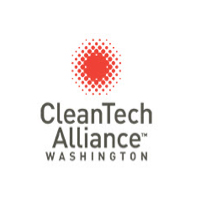 |
In 2010 James Gollub co-directed the Washington State Clean Energy Leadership Plan Report: Accelerating Washington Clean Energy Job Growth with Navigant. This initiative analyzed emerging clean energy technologies in energy efficiency, renewable energy integration, and bioenergy. The initiative delivered strategies for demand-pull and innovation-push development. The recommendations were reviewed and approved by the Washington Clean Energy Leadership Group and were adopted and implemented by the State through new public private partnerships. The Washington Clean Technology Alliance has been a major drive of implementation following this project |
| |
SPUR-PG&E: Building San Francisco’s Clean Tech Industry |
 |
In 2008 our team (with ICF) was sponsored by SPUR and PG&E to improve understanding of the structure and position of clean technology as an emerging industry in the San Francisco economy relative to the balance of the Bay Area. The key questions to be answered were how many local clean tech businesses exist in the San Francisco Bay Area today, where they are located, why types of work they specialize in, how they fit into the economy and what conditions are essential to their success. To answer these questions our team assembled a database of over 400 clean tech firms in the Bay Area, analyzed their economic characteristics, broke them down into 11 major market segments (six being the Bay Area focus), and carried out case studies of a range of local executives, policymakers and experts in the clean tech marketplace. Based on this information we were able to show the diversity of markets served, specialization in sub-areas of the Bay Area, the continuum of value delivered, the input advantages that explain concentration of clean tech industry growth. From this our team identified areas of clean tech in which San Francisco led in comparison to other nodes or hubs as well as specific strengths and weaknesses in key economic inputs within San Francisco. With this we defined a mission and approach for maintaining and growing the clean tech industry within the Bay Area and specifically in San Francisco. Our recommendations provided specific recommendations in innovation, workforce skills, and physical infrastructure. We concluded with three principles for building San Francisco’s clean tech economy and outlined eight specific directions to take to accelerate clean tech growth with examples from other, often competing, regions or sub-regions.
|
| |
Exponent: Clean Technology Solutions Development Strategy |
 |
In 2010 Gollub was employed by Exponent Corporation, a world recognized forensic science and engineering company, to develop the plans for a new clean technology solutions program. During that time Gollub led Exponent team members to design and plan two pilot initiatives that were to be supported, when implemented, by a multi-client sponsorship—one on plastic waste conversion and another on sustainable concrete. The plastic waste conversion initiative focused on the need to evaluate conversion systems that can minimize disposal impact and maximize economic value of the 26 million tons of plastic waste generated annually in the US and 73 million tons in the EU. The proposed program was to assess plastic conversion technology and support a consortium to advance adoption of innovations by current and future recycling industry leaders and investors. Key activities included the identification of leading plastic waste conversion technology systems and assessment of the technical performance, energy and environmental outputs and economic returns from new technologies to inform end-users and investors. The second initiative planned was focused on developing sustainable concrete solutions and concentrated on the assessment of new practices and emerging technologies for integration into a mix-optimization tool. The opportunity to be addressed included three areas: Reducing CO2 in concrete materials through supplementary cementitious materials (SCM) and limestone filler, aggregate size and gradation optimization (binder content reduction), low CO2 cements, and cement-free binders (geopolymers and alkali activated materials); Performance-based specifications (for greater flexibility in meeting ASTM C 1157 standards); High performance concrete (tailored composition to enhanced durability, strength, structural demand, environmental conditions, chemical exposure, service life and maintenance). This initiative was designed to develop new decision-making optimization tool and evaluate new materials and emerging technologies, packaging this information for sponsors. These plans were accepted by Exponent but were not implemented at that time due to the recession and associated business development challenges facing multi-client programs. |
| |
US Offshore Wind Collaborative Organizational Business Plan for MTC |
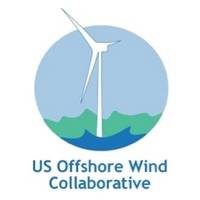 |
In 2006-7 Gollub and team (with ICF) were contracted with by the Massachusetts Technology Collaborative (MTC) with support of General Electric and the US Department of Energy to develop an internal organizational plan for the US Offshore Wind Energy Collaborative (USOWC). This input built on a prior framework project completed by consultants and MTC in 2005. This new large-scale collaborative organizational planning process tackled an opportunity facing diverse challenges. Through the process stakeholders were convened and systematically facilitated to define the key challenges and organizational building blocks key to accelerating growth of this important, just then starting to grow, clean energy industry. Participants included stakeholders invited from across sectors including wind energy and engineering, investment, federal and state regulation, marine ocean environment experts and advocates and community interests from across the US. The organizational plan explored America’s energy needs to establish the case for offshore wind, examined the forces catalyzing organization of the OWC, then defined the mission, objectives, membership, work teams, outputs and integration needed to enable offshore wind energy solutions. The plan created defined organizational functions, phases, legal vehicles, governance, leadership, operating management and staff, project and team management (key to a collaborative), property rights, administration, and financial structure. The organizational plan concluded with the steps to launch and operate, emphasizing the need for this new industry to have new thinking that preserves the integrity of the ocean while building stewards and stakeholders needed to advance integrated action. The USOWC has now been running since 2007 and formally established as a 501(c)3 in 2010 serving as an advocate for the business case for offshore wind and a venue for collaborative solutions. |
| |
Economic Revitalization by Cities in Heilongjiang Province/World Bank: Daqing Diversification |
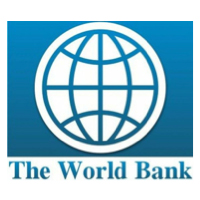 |
This assignment completed in late 2007 by Gollub and team (with ICF) provided consultative advisory services to Heilongjiang Province and Daqing Municipality to support on-going provincial and local economic development as part of the China CDS Economic Revitalization by Cities in Heilongjiang Province project, supported by the World Bank. Our advisory services were provided on three different revitalization topics: Diversifying Daqing’s oil and gas industrial base (described here), positioning and enhancing marketing of Qiqihar’s local economy and developing an integrative strategy for development of the Ha-Da-Qi technology corridor (with multiple technology hubs and dedicated theme-specific industrial parks). This overview focuses only on the Industry Structure Rationalization of Daqing. Our team provided guidance to assist the municipality of Daqing in the identification of industrial targets on which the municipality might focus in diversifying its economy over time. Our team conducted analysis off and on-site that included four steps: (1) Introduction of the cluster-based economic development framework. (2) Analysis of the structure, status ad cluster potential of Daqing’s oil and gas industry, its development dynamics and down-stream diversification opportunities. (3) Assessment of the strengths and weaknesses of economic inputs key to cluster growth, including provider responsiveness to the needs of the regional energy industry. (4) Examination of diversification opportunities and directions for the Daqing oil and gas industry, agriculture and bio-fuels, bio-pesticides and related subsectors. The analysis and strategy process concluded with a workshop on the process of collaborative regional economic diversification with key public and private officials. |
| |
Connecticut Hydrogen & Fuel Cell Cluster Benchmark Analysis for CCAT & DECD |
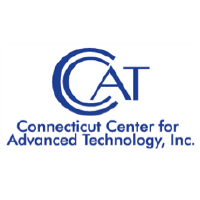 |
In 2007 James Gollub and team (with ICF) directed a highly focused, analysis and collaborative strategy process for the Connecticut Center for Advanced Technology (CCAT) and the Connecticut Department of Economic & Community Development (DECD) to craft first steps toward an action-focused strategy to accelerate commercialization and growth of hydrogen and fuel cell industry development in the state. The strategy process analyzed and benchmarked comparative strengths in science and technology competencies and output (publications/citations, intellectual property production, workforce stills by field) as well as the formation, expansion and growth of enterprise in the field of hydrogen and fuel cells. Then an intensive collaborative strategy process was crafted and facilitated with 35-40 representatives of companies and input providers to define shared challenges, agreed upon actions and strategic directions for collaboration between stakeholders—public and private. In 2008 the strategy was expanded and formerly submitted to adopted and supported by CCAT in partnership with the State Department of Economic & Community Development (DECD) among other entities to accelerate growth since that time. |
| |
Governor’s Competitiveness Council: Texas Petrochemical & Energy Cluster Strategy |
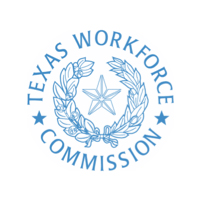 |
In 2008, Gollub and his team (with ICF) were awarded the contract to complete the energy and petrochemical industry cluster strategies under the Texas Cluster Initiative for the Governor’s Competitiveness Council, managed by the Texas Workforce Commission. The strategy process took these steps: (1) defined and guided development of a cluster stewardship group; (2) conducted a detailed analysis of each cluster in terms of each clusters building bocks including size and growth, diversity/breadth, depth/value-chain, dynamism/entrepreneurship, and autonomy/independence—presented to the Competitiveness Council and cluster stakeholders; (3) detailed assessment of each economic input key to the competitive growth of the energy and the petrochemical cluster. This included in-depth assessment of: (a) workforce and the challenges of building the skills pipeline, (b) resources key to energy and petrochemicals and strategic directions (shale, wind, etc.), (c) infrastructure key for production and distribution, (d) innovation needed to discover, develop and deploy breakthroughs in energy and petrochemicals, (e) governance policies—permitting, taxes, legal environment, carbon management; (4) prepared a strategy building from the collaboratively defined priorities of over 100 leading producers, suppliers, infrastructure, regulatory and financial stakeholders from these clusters, which were transformed into a set of strategic directions for state and private sector action presented to the Governor’s Competitiveness Council; (4) the sign-off on strategic recommendations by the (then) governor that have subsequently guided state and public-private actions in aligning and enhancing key inputs for each segment of the energy (from shale oil to wind) and petrochemicals (mainstream chemicals to biofuels). |
| |
South Carolina Hydrogen & Fuel Cell Economy Strategy |
 |
In 2005 James Gollub and team (with ICF) directed the South Carolina Hydrogen & Fuel Cell Economic Strategy that assessed strengths and weaknesses across the state's institutions and industries and developed collaborative strategies for three centers with distinctive clean energy competencies—Columbia, Aiken and Greenville/Spartanberg/Clemson—each reaching agreements on specific portions of next generation hydrogen and fuel cell technology-based economic development (see Columbia's fuel cell collaborative and fuel cell district). The strategy was implemented in 2006 and renewed in 2010 carried forward by the South Carolina Hydrogen and Fuel Cells Alliance and supported by a hydrogen infrastructure investment fund and innovation programs. Key partners were University of South Carolina, Clemson University, Savannah River National Laboratory, South Carolina Department of Comme.rce, South Carolina State University, the Applied Research Center: Hydrogen (Aiken). There is a number of national, state, local and private sector affiliates as well, SCRA, SC Energy Office, EngenuitySC, Greenway Energy, Palmetto State Clean Fuel Coalition, NSF Industry-University Cooperative Research Center for Fuel Cells, among others |
|
| |
California Institute for Regenerative Medicine (CIRM) |
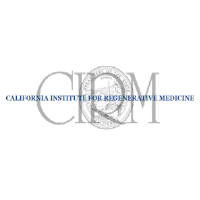 |
In 2013 James Gollub Associates completed the Strategic Roadmap for Continued Innovation for the California Institute for Regenerative Medicine (CIRM). This strategic roadmap defines challenges, actions and their proposed structure to access new public-private sources of funding for pre-clinical and clinical trials, accelerated commercialization readiness of regenerative medicine innovation, and expansion of pre-competitive R&D to enable growth of stem cell medicine. We were asked to complete a three-step strategy to guide future directions to optimize development of stem cell innovation in California. The first step encompassed a SWOT benchmark analysis of the status of stem cell research and development in California. The second step assessed alternative models for accelerating progress from translational research to commercial solutions based on examining state and regional initiatives nationally and identified candidates for consideration by CIRM—including how to attract R&D and investment partners. The third step reviewed the proposed models with over 30 national leaders in biomedical investment, bio-pharmaceutical companies, major biomedical foundations and academic sciences. The fourth step then collaboratively reviewed these vetted models with the entire internal CIRM executive team to refine and reach agreement on acceptable strategic directions for leveraging CIRM funding through new partnerships with foundations, corporations and investors, new ways of enhancing progress of early- stage innovations through to market readiness, and, pre-competitive initiatives with industry to solve abiding technical challenges. CIRM experienced an immediate leadership turnover following completion of this roadmap. The new leadership adopted two of three priority initiatives. One focused on providing a commercialization support capacity to aid stem cell technology development. The other action was to allocate greater funding to the ‘chasm’ of phase 1, 2 and 3 clinical trials. Today CIRM has a growing number of firms moving through clinical trials and in doing so are now more able to secure investment or acquisition needed to bring stem cell applications to the clinical care marketplace. |
| |
MCA Biomedical Institute of the Americas (renamed The Cardwell Collaborative) |
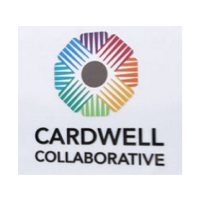
|
From 2012 through 2013 James Gollub served the Medical Centers of America (MCA) Foundation to direct development of the vision, strategy and business plan for a new Biomedical Institute of the Americas (BIA). The object of this major regional initiative was to establish a new biomedical complex that would house biomedical research, develop and commercialize biomedical innovations and retain and attract companies both at an anchor facility and a surrounding technology park. This cross-state and cross-border initiative first shaped a regional vision consensus on the economic value of a biomedical complex to the Paso del Norte region (El Paso, Los Cruces, Ciudad Juarez). This was followed by an assessment of the region’s competencies and comparative strengths and weaknesses in four fields of biomedicine leading to the comparative analysis and specification of proposed models to optimize enterprise formation, expansion and attraction and the integration of these findings into a strategy for a new Biomedical Institute of the Americas. On approval we then prepared the detailed business plan for implementing these recommendations, including a new biomedical tech park in one building (the Cardwell Collaborative) to house biomedical research, incubation and a capitalized commercialization program (e.g., RedSky) as well as a surrounding cluster network. Based on this work MCA was able to secure over $50 million for its development, capital for their new incubation/acceleration program, as well as 13 acres for the new technology park site. |
| |
Children’s Hospital of Oakland Research Institute (now: part of UCSF Benioff Children’s Hospital, Oakland) |
 |
In 2013 James Gollub served as an advisor to Children’s Hospital of Oakland Research Institute (CHORI) just as the parent entity was becoming a partner of the University of California San Francisco (UCSF) Benioff Children’s Hospital. This brief internal consultation to top management provided a framework for guiding the faculty and staff of the CHORI in defining their core competencies and how to represent and preserve the established value of the eight long -standing CHORI Research Centers. These include Centers focused on cancer, genetics, immunology and vaccine development, nutrition and metabolism, obesity, cardio vascular disease and diabetes prevention, sickle cell and thalassemia, newborn and pediatric critical care, and borne marrow transplantation and cellular therapies research. This consultation also briefly introduced models for enhancing the revenue options for CHORI, based on strong interest in enhancing pre-competitive R&D consortia on pediatric medicine, commercialization of intellectual property, and options to attract and concentrate children’s medical services, new and established biomedical enterprises around a core complex.
|
| |
Assessing Opportunities for Peel Memorial Centre for Integrated Health & Wellness |
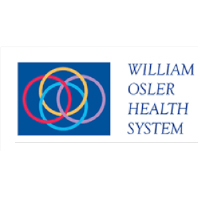 |
In 2009 Gollub was retained by the William Osler Health System to provide a framework, models and a leadership workshop on selecting options for growing a biomedical cluster leveraging a soon to be redeveloped regional health center in the Brampton (Greater Toronto Area). The framework introduced the economic logic of different modes and scales of concentrating and growing a continuum of biomedical activities that produce value added and employment in the surrounding area. Four models known illustrative models were presented that Gollub had studied, including integrated healthcare service clustering, multi-hospital and biomedical enterprise technology parks, university anchored hospital, retirement and community developments, and new R&D institutes anchored developments focused on regional biomedical themes. Gollub introduced screening criteria for evaluating options include their tenant aggregation potential, synergy dynamics and secondary up-stream or downstream value-chain development. The new development was reviewed in terms of each of these criteria with recommended next steps for a collaborative development process harnessing local and broader Toronto MSA input advantages. The new complex was developed and opened in 2017. |
| |
Queensland Department of Tourism, Regional Development & Industry—Economic Analysis & Structure of Smart Communities: Cases and Lessons Learned |
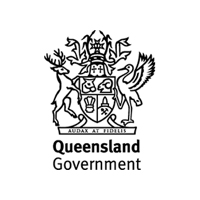 |
In 2008 Gollub (with ICF) was contracted with by the Queensland government in Australia to provide a technical white paper to guide state efforts to plan and develop new ‘smart community’ biomedical hubs in major metropolitan areas. We provided a framework and cases that illustrate the potential and trade-offs of different models. ‘Smart communities’ is an effective framework that focuses on creating a micro-economic environment within a designated district within a metropolitan area where investments are made and coordinated to achieve a platform with distinctive economic input advantages for one or more industry cluster. At its most simple this economic platform is achieved in three ways: leveraging anchor assets, such as an existing or newly formed anchor institution, building economic input advantage that feed into target clusters, and concentration of cluster development. Case studies of the structure and economic impact of four cases were provided. These were: Illinois Medical District (Chicago) a well established critical mass of hospitals, research institutions and technology ventures; San Francisco Mission Bay, anchored by a major university (UCSF) as well as strong incentives for corporate co-location as well as streamlined development process; Stockholm Science City, a convergence of urban redevelopment and a biosciece-based economic development strategy leveraging surrounding assets; Toronto’s Discovery District, which started as a metropolitan economic development strategy emphasizing growing knowledge-based economics, but also leveraging new innovation bridges, such as their MARs initiative, among others. Our assessment of impacts show that these models have four values: Accelerated growth of target clusters, retention and expansion of major anchor institutions, enhanced metropolitan economic competitiveness, and improvement of broader community infrastructure. |
| |
British Columbia Life Sciences Cluster Strategy |
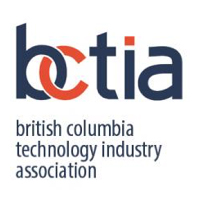 |
In 2005 James Gollub (with ICF) directed and prepared the biotechnology cluster strategy for the British Columbia Industry Technology Industries Association (BCTIA) and then separately prepared the structure and content for the British Columbia Life Science Cluster Research Strategy for the Province’s higher education ministry. This analysis and strategy process was part of a province-wide technology industry strategy that the Gollub team carried out focused on five individual clusters. On the Life Sciences cluster Gollub and team completed a benchmark assessment of the status and competitive position of the BC life sciences cluster and then facilitated a large scale collaborative strategy process with representatives of the innovation system (universities, institutes and labs), investment environment (national banks, regional investors, public investment entities), work force training resources (universities, colleges) and other key input providers. Based on this collaborative process a set of priority development challenges and actions were defined and were vetted by members of the province’s life science industry. The final cluster strategy was issued by the BC Life Sciences cluster through the BCTIA. |
|
| |
San Francisco Federal Reserve – Bay Area Impact Investment Conference: Achieving Accelerating Impact Investment Deal Flow |

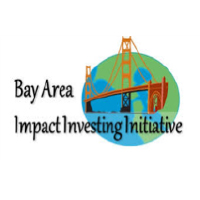
|
In March 2015 James Gollub was an invited speaker a conference sponsored by the San Francisco Federal Reserve focused on the challenge of accelerating impact investment in an economic region, such as the San Francisco Bay Area—that is investments that have triple bottom-line impacts (economic, environment and social equity). Gollub introduced a method he and his colleagues have developed and long applied in their regional economic development strategy practice that addresses two key challenges facing impact investments that pertain to helping markets work. The first challenge is achieving scale of impact—going beyond a patchwork of individual cases. The second challenge is generate a sufficient quality and quantity of deal flow that will attract scale of investment. Gollub and his team have found that working with industry clusters that convene stakeholders including producers, suppliers and the continuum of economic input providers, permits defining and aggregating demand for impact investment. This bottom-up approach can yield a scale of both soft deal flow that are non-dilutive capital and re-channel existing resources while also defining a greater scale of hard deal flow focusing on market demand-driven enterprises or product needs that can be served through existing or new ventures. Gollub and his team have also found that by ‘convening the marketplace’ within the value-chain of clusters as well as ACROSS clusters that it is far easier to articulate and mediate cost-effective delivery of solutions that attract investors and market suppliers. That is, by matching demand to providers through this collaborative process banks, corporations, foundations and other prospective investors can find well-specified demand that can be served by providers whose decisions will capture economic value in the region while meeting performance criteria. Gollub concluded by providing examples of how demand and supply of often poorly understood market needs can be opened up and enabled to yield constructive and higher impact outcomes than more traditional individual lending or investment. The key is aggregating demand and mediating supply using the economic, environmental and social value criteria to clarify and optimize targeted portfolios of needed transactions. What is key here is that this result can best be achieved via a regionally focused process that integrates ‘top-down’ diagnosis and ‘bottom-up’ collaborative process to yield positive impact results. This what markets naturally do in high performing regional economies where market stakeholders are viewed more inclusively and are prepared and eased through learning how to harness and leverage their diverse array of assets in new ways. |
| |
Oxford University Center for Buddhist Studies (OCBS) |
 |
In 2013-14 James Gollub Associates served the founder and executive director of Oxford University’s Center for Buddhist Studies. This client is a world-class center for the secular analytic study of the cultural and literary/linguistic (early Pali language) base of Buddhism and apply this knowledge to contemporary social, political and economic thinking and action. The assignment was to, within limits, develop a structure that would sustain and enhance the depth and breadth of operation, without losing the consistency of its core mission and its charter with Oxford University. To that end James Gollub Associates analyzed the current structure and operations of the OCBS and compared alternative models in different fields of research, education, training and communications. Recognizing the distinctive visibility of the subject (Buddhist thinking and culture) as well as its advocates and spokespersons (such as the Dalai Lama, Daw Aung San Suu Ki, and Buddhist leaders from across the globe) a careful but purposeful structure was proposed that recommended a carefully structured ‘stewards group’ (distinct from a board), with distinct business models for the Center’s possible expanding range of activity and how to build support for them. These activities included strategic research programs with scholars worldwide (Buddhism and behavior; Buddhism and science, Buddhism and philosophy), lecture campaigns, and purposeful communications and adult outreach based on new understandings, building on the OCBS Journal. Our findings were, explicitly and selectively adopted for implementation on an incremental basis, beginning with a novel stewards structure. |
| |
California Asian Pacific Chamber of Commerce (CAPCC) Joint Vision |
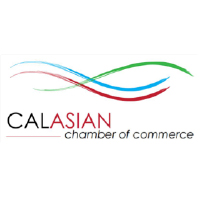 |
In 2014 Gollub was retained by the California Asian Chamber of Commerce to provide a framework for their board of directors to guide strategic directions and to facilitate a round table planning process to shape a vision with board members. The process included, first, articulation of challenges that the state-wide board faces in optimizing services to its 30 regional chambers and the over 600,000 Asian-Pacific enterprises in California focused on statewide advocacy, program delivery, outreach, facilitation of trade with the Pacific Rim, and building the Asian-Pacific value-chain. From priority challenges the board specified new roles they could play, including providing integrated advocacy at the national, state, regional and local level, pathways for enterprise growth, new entrepreneur development programs, including access to capital, member leadership development, skills development initiatives, offering innovations to enhance efficiency by member firms, structuring research to address members, and enhancing business opportunities for small business across the Pacific Rim. New implementation partnership and finance models were explored and targeted. Based on the vision options for implementation were articulated ranging from memoranda of understanding (MOU) to new affiliate structures to the formation of strategic subsidiaries. The board then ratified challenges and agreed to seek broader statewide input, to define actions to carry out with members, build statewide organizational strategy to fulfill its vision and mission while keeping in mind the ‘return-on-solution’ from new commitments. |
| |
New Jersey Innovation Triangle Strategy: Commission on Job Growth & Economic Development |
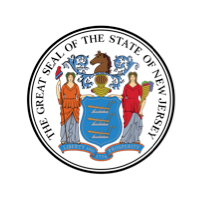 |
In 2005 our team was asked to advise the state of New Jersey on how to strengthen New Jersey’s innovation pipeline through a vision and strategy for New Jersey universities, business and government (the triangle) to accelerate formation, expansion and attraction of technology industries in key communities. This initiative was chaired by Roy Vagelos, former chairman of Merck, there were 24 stewards that included the presidents and vice-presidents of each New Jersey research university (Princeton, Rutgers, NJIT, UMDNJ, Stevens Institute of Technology), state agencies and private sector leaders. For this initiative we identified the technology clusters key to the New Jersey economy, assessed and benchmarked the science and technology competencies of each university in the state, convened a series of five cross-university presentations of competencies in fields of science with representatives of each technology cluster responding by presenting their directions and needs from universities. This first round of interactive work sessions was then followed by two, additional and parallel, rounds of collaborative strategy. Here teams comprising representatives from across each New Jersey university worked with representatives of each technology industry cluster to define challenges both sides faced and actions to pursue together. The outcome were competitive, collaborative, proposals for cross-university and industry collaborative that were reviewed and prioritized by panels from the National Academy of Science & Engineering. Following release of the Innovation Triangle Strategy each university expanded their outreach and engagement with the industries they had been working with to shape collaborative initiatives. The state launched the Edison Innovation Fund to develop, sustain and growth technology and life sciences businesses in New Jersey. Further, early efforts to launch three innovation zones were carried out, each providing tax credit and incentives to businesses co-locating near universities in Camden, New Brunswick and Newark. These are now being expanded by the state.
|
| |
University of Idaho, River Bend Research & Training Park Strategy |
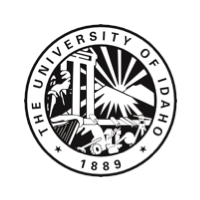 |
In 1997, we were asked by the office of the president of the University of Idaho to apply our framework to develop the vision and strategy for a possible technology site and branch campus for the University of Idaho. The clients here were the University of Idaho and the Jacklin Land Development Company of Post Falls, Idaho were the clients. Jacklin offered 28 acres of prime real estate to the University of Idaho Foundation for the creation of the core University of Idaho Research Park. We worked closely with a stewardship group anchored by the president and vice president of the University of Idaho, members of their board, leading members of the Coeur d'Alene's city council and chamber of commerce and northern Idaho industry associations. This strategic planning process encompassed a baseline comparative analysis of the regional economy that identified existing and emerging clusters. This was followed by a rigorous assessment of the core science and engineering competencies of the University of Idaho. This included both analyzing science publications and intellectual property generation but also encompassed intensive facilitated assessments of faculty capabilities, experience, aspirations and requirements in each of a portfolio of fields. These competencies where then introduced to each existing or emerging cluster in work sessions that defined shared challenges and readiness to explore and grow in needed areas. The set of priorities arising from this process served as key inputs to the strategy for the University of Idaho Research Park. In 2002, the first building was completed and an additional four acres were transferred to the university beyond the initial 28 acres. This Research Park was designed to link the university and business and commercial uses, physically and programmatically. The park houses five technology and research organizations, as well as two University of Idaho programs. The Research Park is now the university’s representative to the northern Idaho economic and community development activities. The Research Park plays a critical role in this mission through its partnerships with businesses, faculty and students, as well as through its state-of-the-art laboratories, computer labs and classrooms for use by both the university and the community. The University of Idaho Research Park is the Northwest’s campus focus for research and technology-based companies wanting to create or continue working relationships with the University of Idaho and other Northwest colleges and universities. The University of Idaho Research Park is also host to the University of Idaho Coeur d'Alene's degree path classes in engineering, geology, geography (GIS), education and agricultural extension. |
| |
City of San Antonio & Behar County: San Antonio Technology Accelerator Initiative |
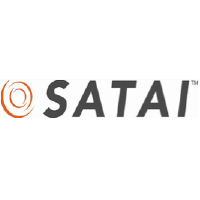 |
Our team was retained by the City of San Antonio and regional partners in 2000 to create a detailed strategy for action that would accelerate the formation and growth of technology-driven enterprise and its retention in the San Antonio and surrounding regional economy of Texas. A carefully screened and appointed stewards group of 20 members was formed comprising the City Economic Development Department, CEOs of major corporations and utilities, presidents of four area universities, the San Antonio Chamber and San Antonio Economic Development Foundation. This project had strong public and private support and followed our method with great acuity. We completed a baseline analysis of the regional economy and identified the emerging and expanding clusters that accelerated enterprise development and growth would impact. These included software and systems, aviation and aerospace, biomedicine, and advanced materials (Note: Two years later we were brought back to complete cluster strategies for the transportation and logistics cluster and the financial services cluster). After assessment of the science and technology competencies and related assets of the region well-structured collaborative working groups with each cluster were carried out. These, each with often 45 to 65 participants, each met three times to define shared challenges, agree upon actions and finalized cluster-specific actions that pertained to growth through diversifying and growing the value-chain of each cluster. From these materials, and under the oversight of the initiative stewards, a business plan for a new economic development entity, SATAI, was completed, reviewed and adopted by all parties. SATAI’s mission was to inspire technology innovation and commercialization, create new technology companies and grow them into viable businesses in the San Antonio and Bexar County regional economy across five emerging technology clusters. The entity was incorporated as a nonprofit launched with city funding in 2002. SATAI received support from the City of San Antonio, the University of Texas at San Antonio, the State of Texas, Bexar County, private companies, individuals and public institutions. By 2010 they had helped acquire $163 million in funding for startups. SATAI came to serve as the South Texas portal for the $200 million Texas Emerging Technology Fund, serving a 32 county region from Nueces County (Corpus Christi) to Bexar County (San Antonio) until the entity closed |
|
|
| |
Queensland Creative Industries Analysis & Innovation Strategy |
 |
In 2004 James Gollub and team (with ICF) directed a first of its kind analysis and strategy of Queensland’s creative industry competencies and strategy for cross-university collaboration in the rapidly evolving field of digital media and the Internet. This contract with Gollub and team was arranged with the objective of documenting and positioning Queensland as a candidate for a new global MediaLab Australia in partnership with the MIT MediaLab. While the Queensland government declined to pursue a relationship with MIT MediaLab, they determined to independently establish and grow their creative industries-focused science, technology and humanities assets. To support this effort we served as an independent resource to carry out these steps: (1) rigorously define the array of science, technology and humanities assets inputs and outputs across Queensland higher education institutions, in fields from neurology and cognition to computer science and digital media; (2) conducted quantitative and qualitative benchmark assessment of those assets including research staffing and revenue, publication and citation frequency, technology development and commercialization; 3) convene faculty by field from across Queensland's three major universities (University of Queensland, Queensland University of Technology and Griffths University) to define critical mass and complementary competencies and aspirations pertaining to innovation, (4) provide in-depth case examples of collaborative technology development institutes from around the globe and (5) collaboratively craft the business plan for a new cross-institutional research, development and commercialization entity to serve international markets seeking creative industry-related innovation. The outcomes included the in-depth analysis of competencies, benchmark status, priority directions from cross campus collaboration and the business plan for OZSci (The Australian Science & Technology Institute) |
| |
Queensland Creative Industries Cluster Strategy |
 |
In 2005 following our completing the Queensland creative industry competency assessment and innovation strategy we were retained to develop Queensland’s first creative industries cluster strategy. This project involved: (1) introducing the cluster concept and organizing a stewardship group across major Queensland media-related industries and public agencies; (2) completing an analytically intensive profile of the vertical (value-chain depth) and horizontal (diversity) structure of each segment of the creative industry cluster; (3) identifying and organizing stakeholders in each of the eight segments of the creative industry cluster, (4) managing and facilitating a three round collaborative strategy process with each cluster segment in three metropolitan regions of the state to define priority challenges, actions to respond to these needs and a partnership mechanism for each region, and (5) working with stewards and cluster segment co-chairs to convene formulation of a bottom-up driven statewide creative industries strategy and forum to introduce and celebrate this aggregate achievement in Queensland. This led to a new state program to invest in creative industries enterprise development at key hubs within major communities across Queensland. |
| |
Using Cluster-Based Economic Strategy to Minimize Tourism Leakages |
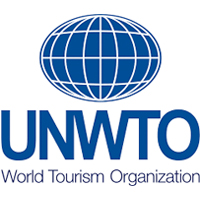 |
At the request of the United Nations WTO James Gollub directed and prepared a guide for leaders in tourism-based economic development focusing on how emerging or developing regions can preserve and grow value and minimize loss (leakage) through applying tours-focused cluster development initiatives. The report and guide drew from prior hands-on, collaborative, tourism cluster strategy initiatives Gollub had directed in Northeast Brazil, Dominican Republic and Scotland, among other locations. What was deemed important by the UN WTO in this strategy guide were two features. First, the detailed mapping out of the tourism cluster value chain provided public and private stakeholders a ‘lens’ through all segments of the economy could effectively identify the risks and benefits of conventional agreements with international partnerships. This was important as provinces and localities often sacrifice longer-term economic multipliers in the near-term search for jobs or revenue from certain types of development projects. The second feature was the outline of the inclusive collaborative strategy process for shaping and realizing vertical depth and horizontal breadth in any region’s tourism cluster. Here, the steps and outcomes shared from very different regions (from Scotland to Brazil) provided potentially encouraging evidence that tourism assets can be identified, organized and leveraged to generate and retain a greater portion of the tourism value chain when and if stakeholders recognize the value and process for doing so. |
|


